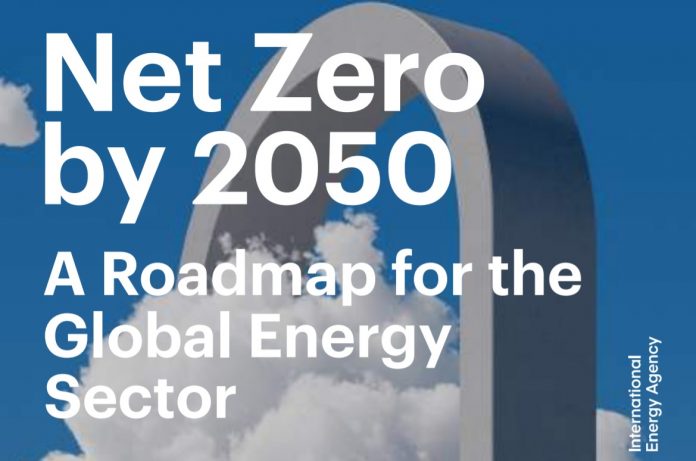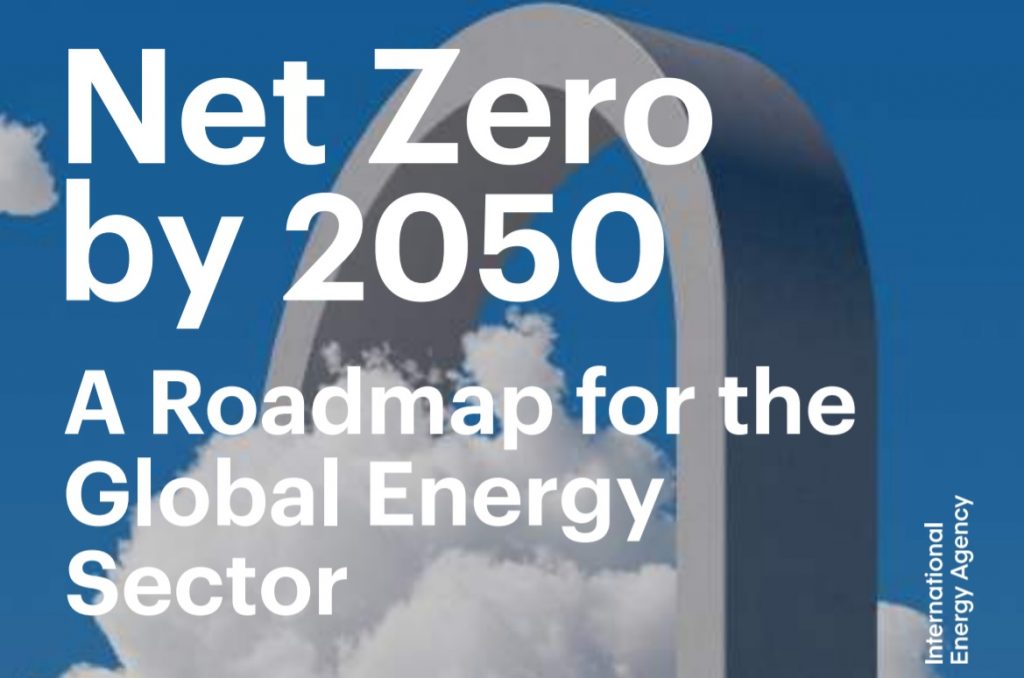
(www.MaritimeCyprus.com) The number of countries announcing pledges to achieve net-zero emissions over the coming decades continues to grow. But the pledges by governments to date – even if fully achieved – fall well short of what is required to bring global energy-related carbon dioxide emissions to net-zero by 2050 and give the world an even chance of limiting the global temperature rise to 1.5 °C.
This special report is the world’s first comprehensive study of how to transition to a net-zero energy system by 2050 while ensuring stable and affordable energy supplies, providing universal energy access, and enabling robust economic growth. It sets out a cost-effective and economically productive pathway, resulting in a clean, dynamic and resilient energy economy dominated by renewables like solar and wind instead of fossil fuels. The report also examines key uncertainties, such as the roles of bioenergy, carbon capture, and behavioral changes in reaching net zero.

Net zero by 2050 hinges on an unprecedented clean technology push to 2030
The path to net‐zero emissions is narrow: staying on it requires immediate and massive deployment of all available clean and efficient energy technologies. In the net‐zero emissions pathway presented in this report, the world economy in 2030 is some 40% larger than today but uses 7% less energy. A major worldwide push to increase energy efficiency is an essential part of these efforts, resulting in the annual rate of energy intensity improvements averaging 4% to 2030 – about three‐times the average rate achieved over the last two decades. Emissions reductions from the energy sector are not limited to CO2: in our pathway, methane emissions from fossil fuel supply fall by 75% over the next ten years as a result of a global, concerted effort to deploy all available abatement measures and technologies.
Ever‐cheaper renewable energy technologies give electricity the edge in the race to zero.
Our pathway calls for scaling up solar and wind rapidly this decade, reaching annual additions of 630 gigawatts (GW) of solar photovoltaics (PV) and 390 GW of wind by 2030, four‐times the record levels set in 2020. For solar PV, this is equivalent to installing the world’s current largest solar park roughly every day. Hydropower and nuclear, the two largest sources of low‐carbon electricity today, provide an essential foundation for transitions. As the electricity sector becomes cleaner, electrification emerges as a crucial economy‐wide tool for reducing emissions. Electric vehicles (EVs) go from around 5% of global car sales to more than 60% by 2030.
For more interesting details, click below to download the full report:
Source: iea














